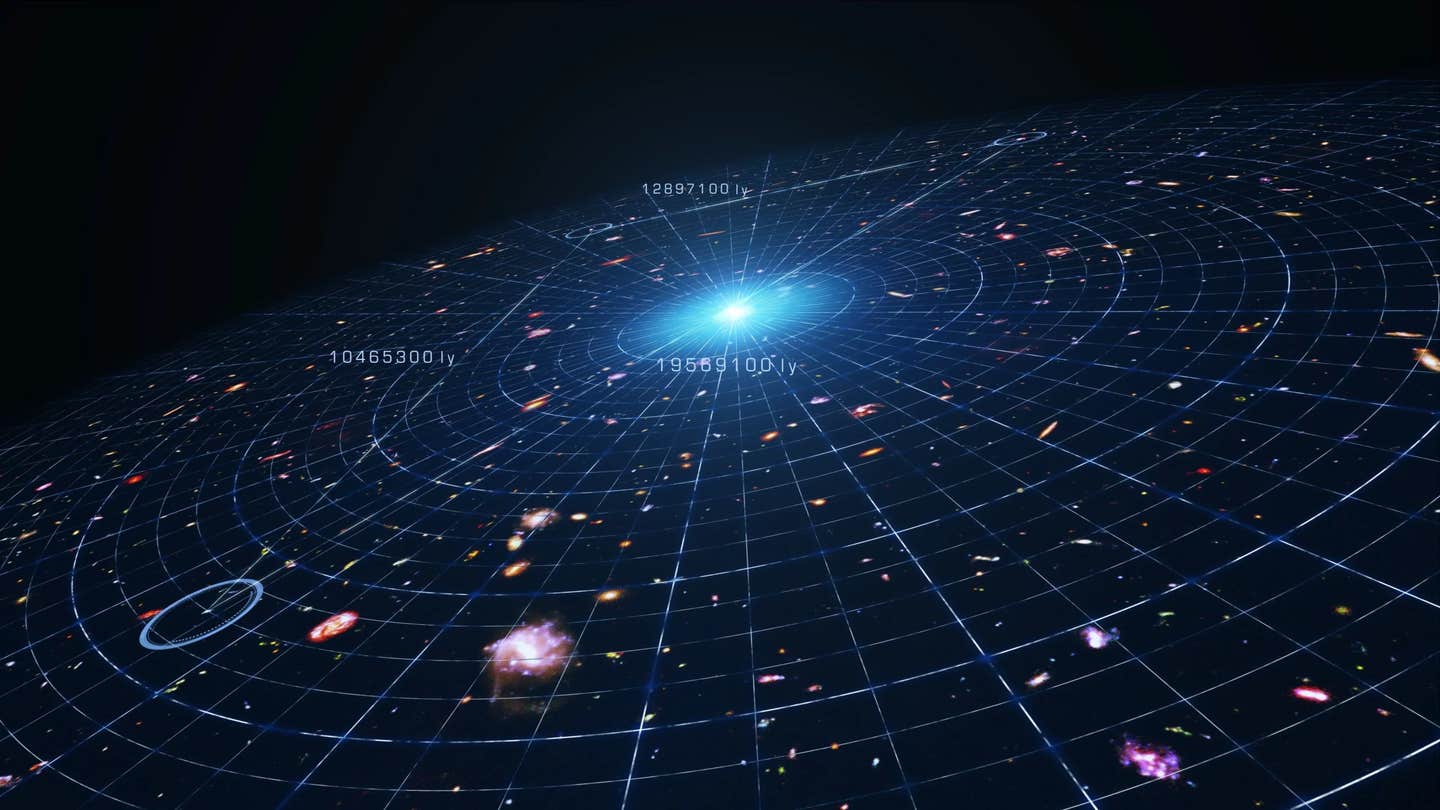New data on the expansion rate of the universe surprises astronomers
A vital question that has plagued scientists for years is: how fast, exactly, is this expansion taking place?

[Sept. 14, 2023: Staff Writer, The Brighter Side of News]
A vital question that has plagued scientists for years is: how fast, exactly, is this expansion taking place? (CREDIT: Creative Commons)
In a groundbreaking development, the James Webb Space Telescope (JWST) has provided pivotal insights into the rate of the universe's expansion. Yet, the unsettling results reaffirm an existing controversy within the world of cosmology.
The Universe, though appearing stagnant to the naked eye, is perpetually in motion. Everything we see is accelerating away from us at an astounding rate, represented by the Hubble Constant (H0). A vital question that has plagued scientists for years is: how fast, exactly, is this expansion taking place?
Measuring the Universe's Expansion
To understand the speed of the universe's expansion, scientists have been using two primary methods. The first involves studying remnants of the early universe, such as light from the cosmic microwave background or age-old acoustic waves. This technique yields an expansion rate close to 67 kilometers per second per megaparsec.
In contrast, the second method involves measuring distances to cosmic entities with established brightness levels, like Type Ia supernovae or Cepheid variable stars. Their luminosity varies periodically and is intrinsically tied to their brightness, providing clues about the universe's expansion.
Related Stories
This method typically calculates the expansion rate to be around 73 kilometers per second per megaparsec. This significant variance in measurements between the two methods is termed the 'Hubble tension.'
Multiple rounds of these measurements have greatly diminished any chance of error in each estimate. Yet, the unsettling discrepancy still looms large.
Hubble's Legacy and its Challenges
Much of our understanding about Cepheid variables stems from data sourced from the Hubble Space Telescope. These stars are invaluable, as astrophysicist Adam Riess of the Space Telescope Science Institute (STScI) and Johns Hopkins University points out. He says, "[Cepheid variables] are the gold standard tool for measuring the distances of galaxies a hundred million or more light years away."
A diagram illustrating the difference in the Hubble and JWST observations, and how combining them produces a more confident result. (CREDIT: NASA, ESA, J. Kang/STScI; Science: A. Riess/STScI)
However, the sheer density of stars in galaxies, when viewed from our far-off position, presents challenges. According to Riess, "stars in galaxies are crowded together in a small space from our distant vantage point, so we often lack the resolution to separate them from their line-of-sight neighbors."
This is where the Hubble Space Telescope's significance is undeniable. Designed to bypass the limiting effects of Earth's atmosphere, Hubble can identify individual Cepheid variables even in galaxies over a hundred million light-years distant, documenting the rhythm of their brightness fluctuations.
Cepheid variable distance measurements taken with Hubble (gray) and JWST (red). (CREDIT: NASA, ESA, CSA, J. Kang/STScI; Science: A. Riess/STScI )
Yet, there's a catch. For the Hubble to truly dissect the light from these stars, observations need to happen in the near-infrared range, an area where Hubble's capabilities are not optimal. Thus, some amount of uncertainty has always accompanied its data.
The James Webb Space Telescope's Intervention
Enter JWST, a formidable infrared telescope, free from the constraints that bound the Hubble. When Riess and his team used the JWST, they began by focusing on a galaxy with a known distance to calibrate the telescope concerning Cepheid variables' luminosity. Following this, they observed Cepheids across various galaxies, amassing observations from 320 Cepheids. This monumental effort significantly minimized the inconsistencies found in Hubble's readings.
Artist's rendering of the James Webb Space Telescope against the backdrop of a distant galaxy. (CREDIT: dima_zel/iStock/Getty Images)
Despite the uncertainties in Hubble's data, its distance-determining metrics were in concordance with the JWST's observations. In essence, the calculated H0 based on Hubble's data, which is around 73 kilometers per second per megaparsec, remains unquestioned for now. This agreement between the two giants of space observation indicates that human error, at least in this instance, cannot be held responsible for the persisting Hubble tension.
Diving into the Unknown
While we have edged closer to understanding the universe's expansion rate, the root cause of the Hubble tension remains elusive. Dark energy, an enigmatic and seemingly foundational force, is suspected of exerting a negative pressure that accelerates the universe's expansion.
The Hubble Telescope. Despite the uncertainties in Hubble's data, its distance-determining metrics were in concordance with the JWST's observations. (CREDIT: NASA / VIA GETTY IMAGES)
Riess elaborates on the significance of the JWST's measurements, stating, "With Webb confirming the measurements from Hubble, the Webb measurements provide the strongest evidence yet that systematic errors in Hubble's Cepheid photometry do not play a significant role in the present Hubble tension."
This validation deepens the mystery, keeping "the more interesting possibilities" alive and beckoning further investigation.
For those keen on delving deeper into this riveting development, the results have been approved for publication in The Astrophysical Journal and can also be accessed on arXiv.
For more science and technology stories check out our New Discoveries section at The Brighter Side of News.
Note: Materials provided above by The Brighter Side of News. Content may be edited for style and length.
Like these kind of feel good stories? Get the Brighter Side of News' newsletter.



